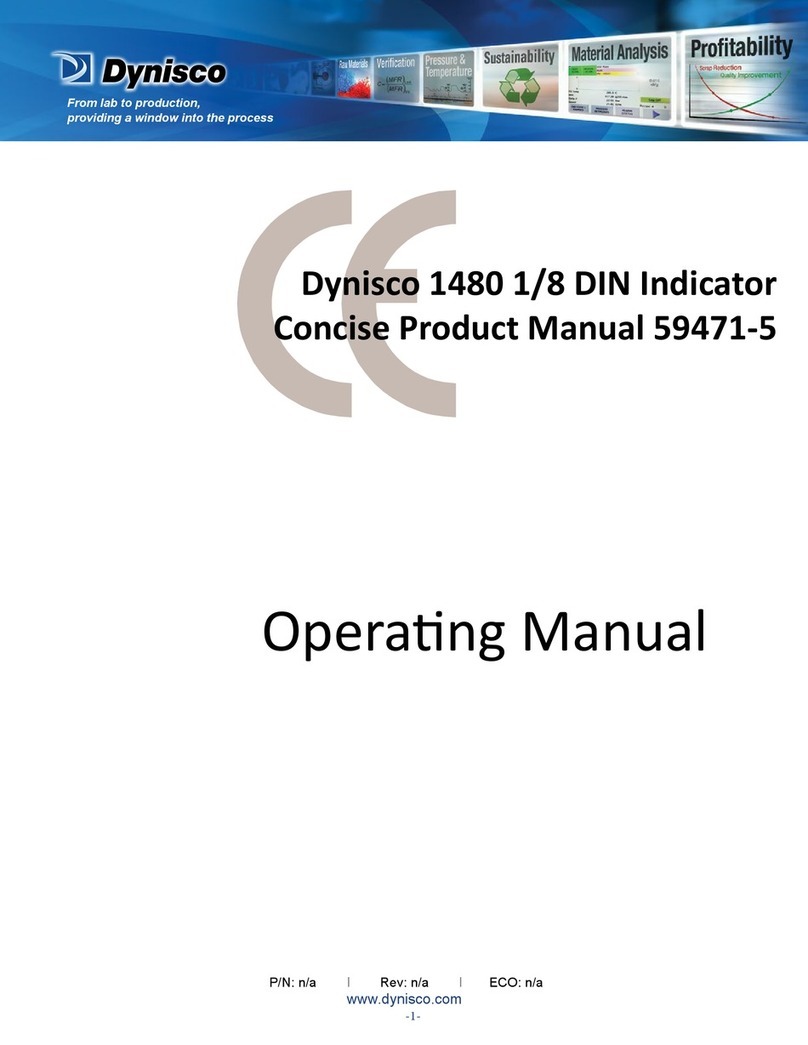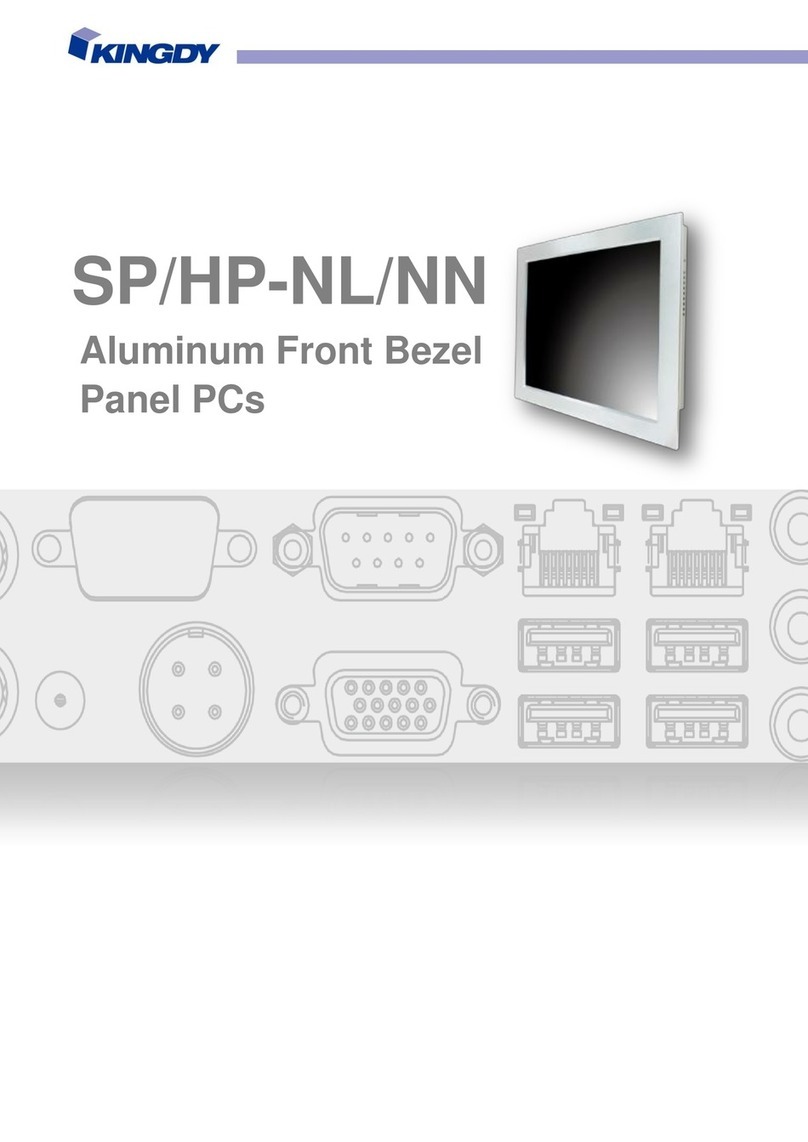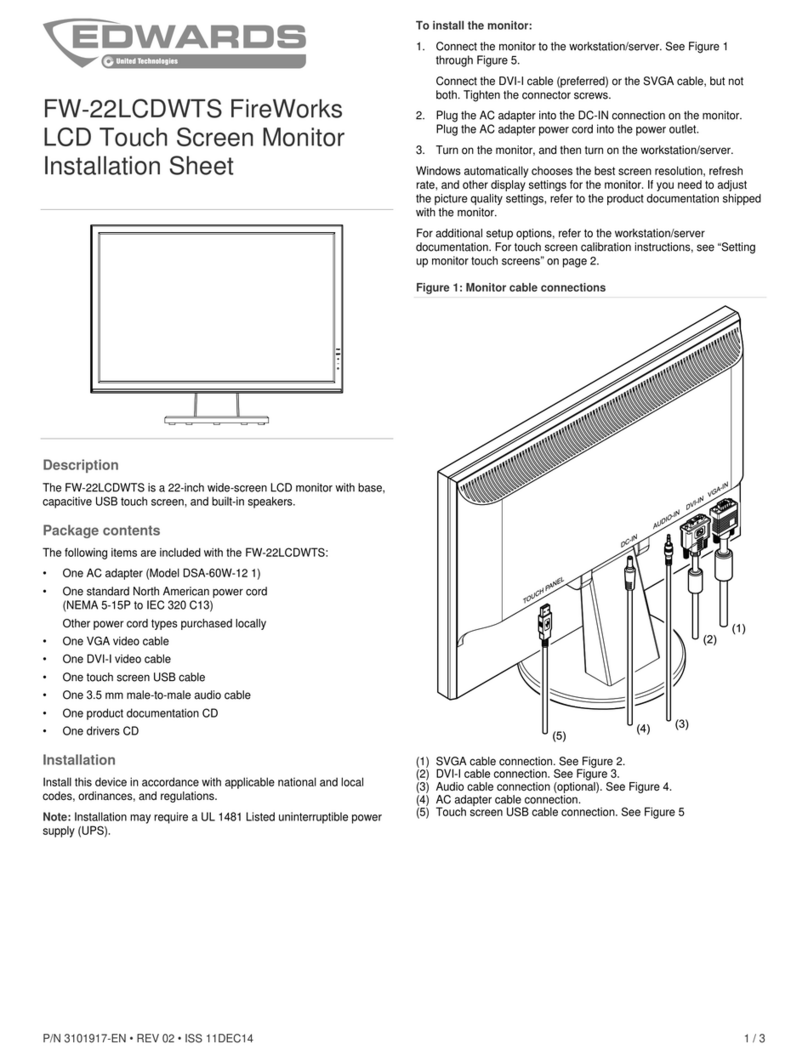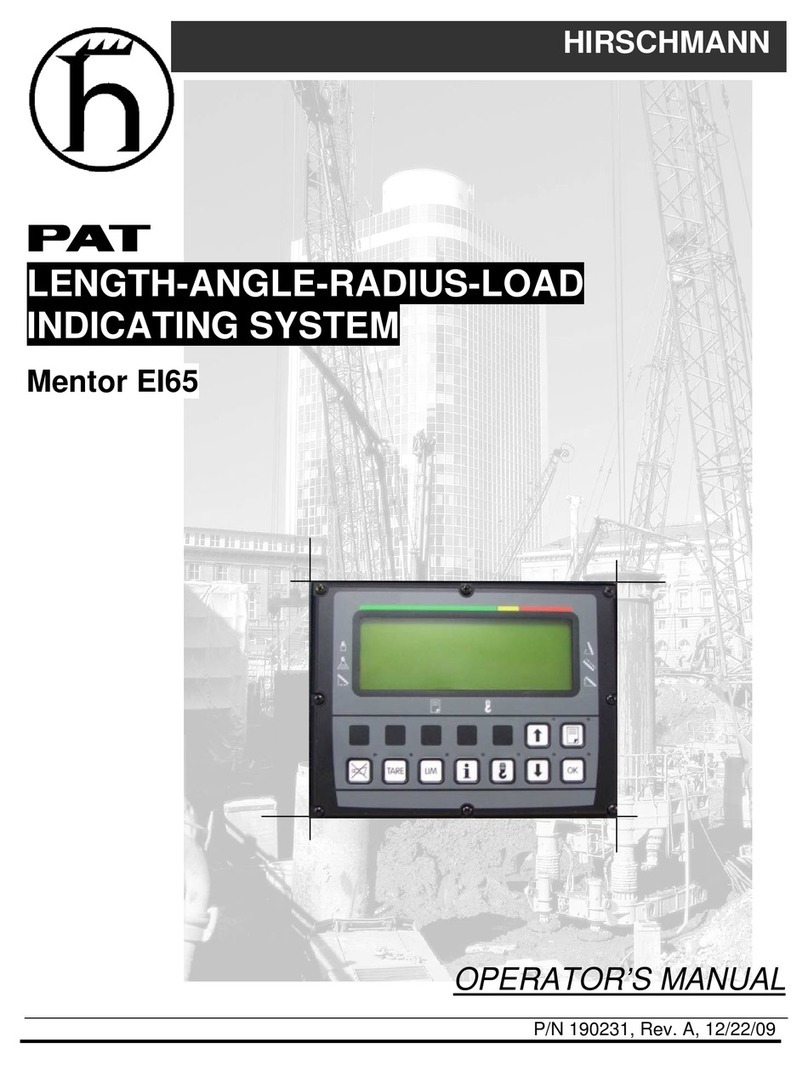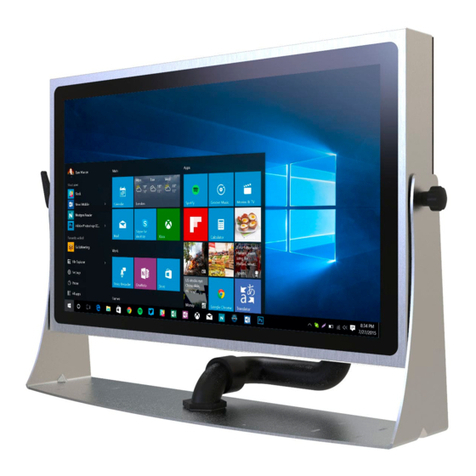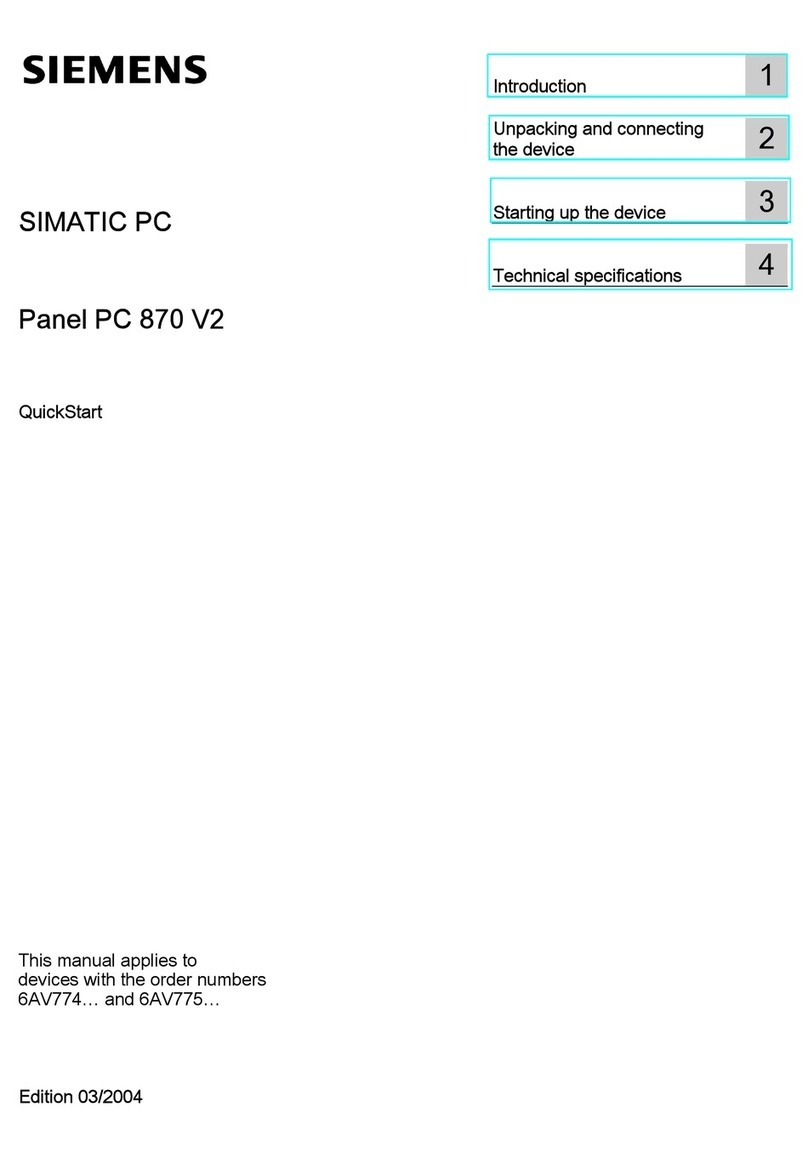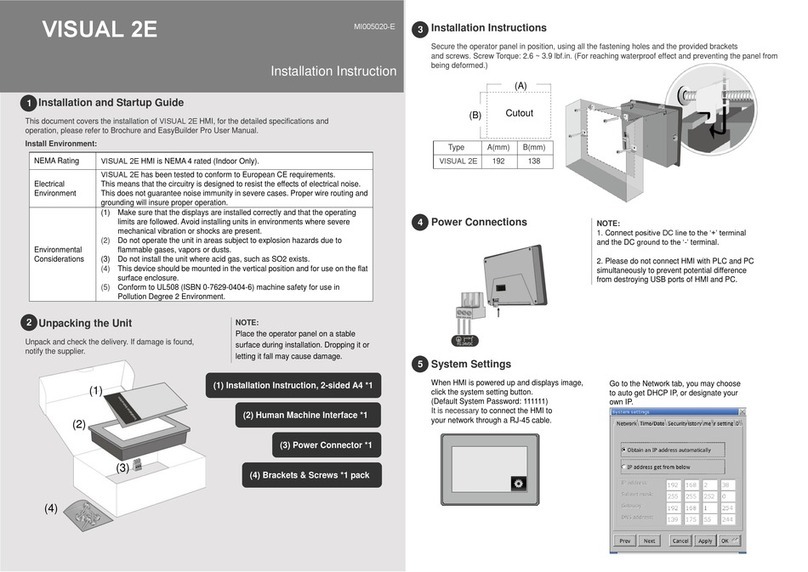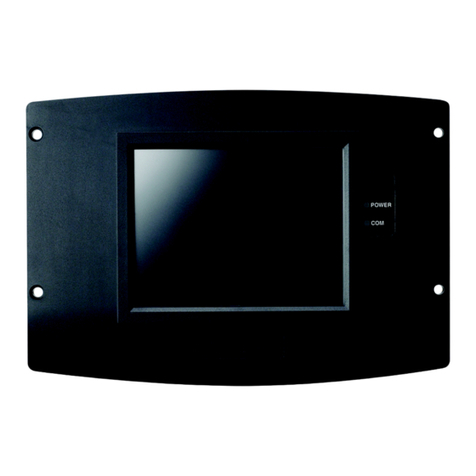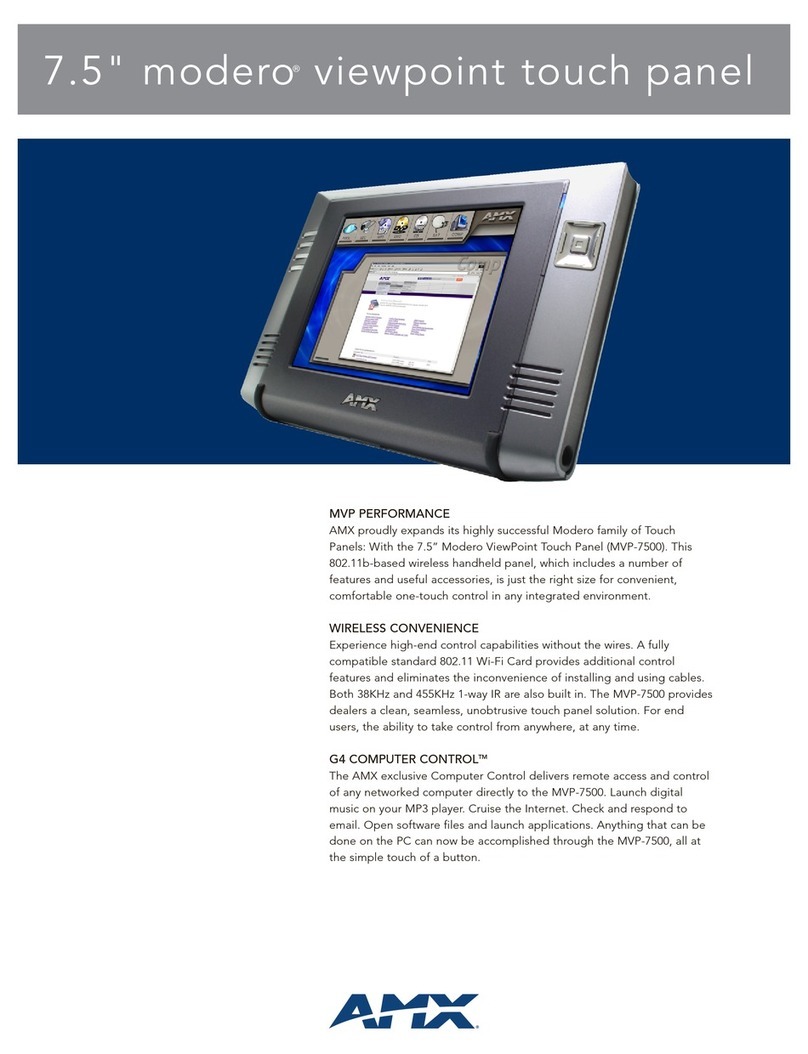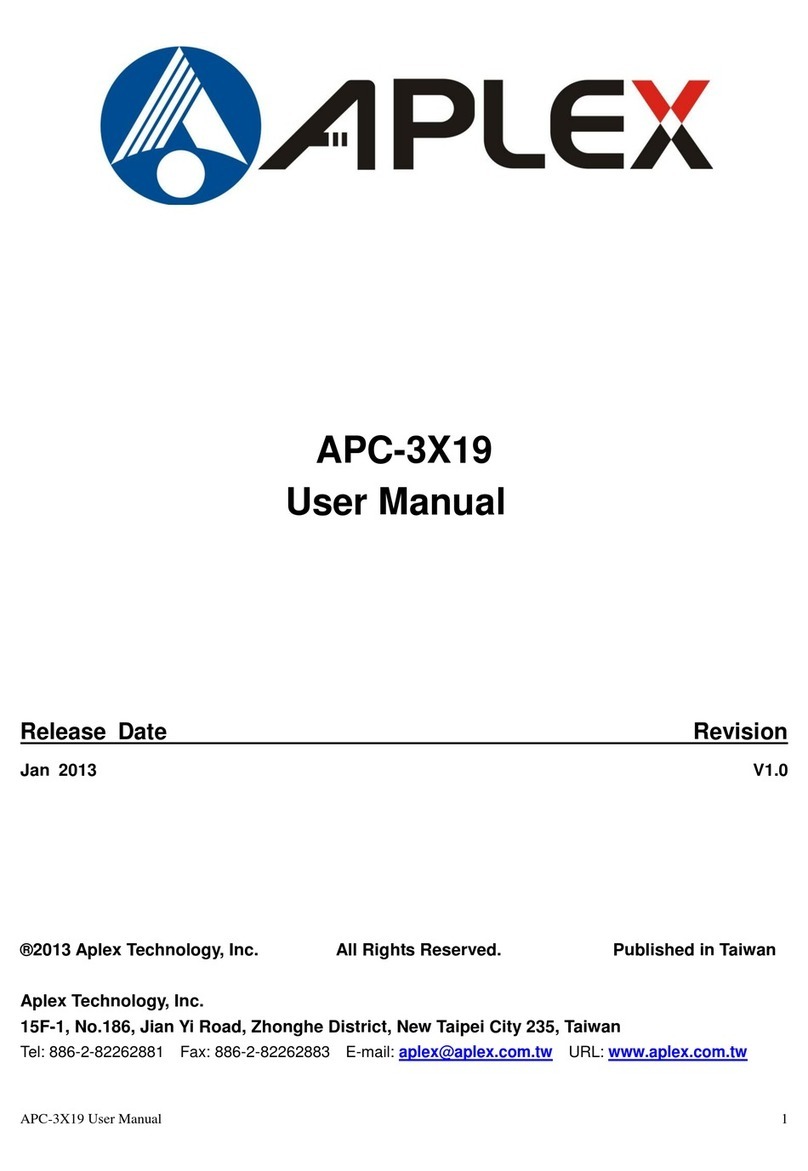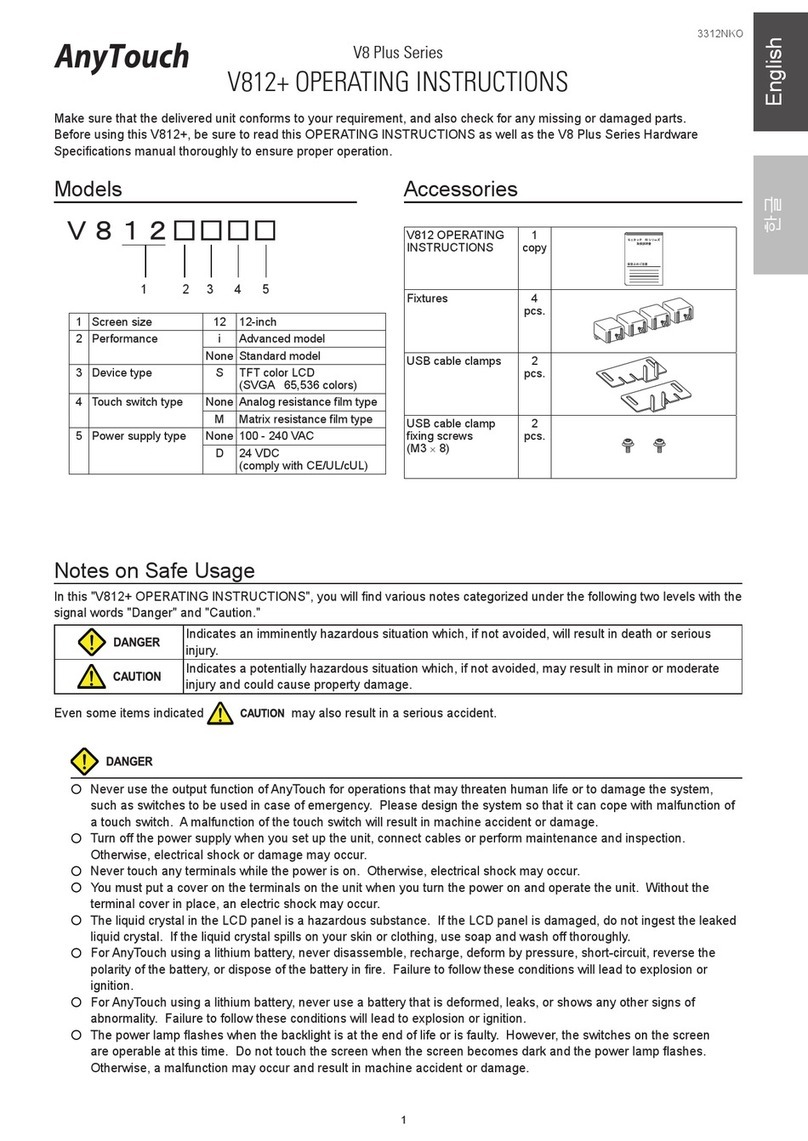Fike TWINFLEX SRP User manual

26-1362-01
TWINFLEX®SRP
Fire Suppression System
Remote Status Indicator (RSI)
(Suitable for TWINFLEX®SRP Control Panel from V01.000)
Engineering and Commissioning Manual
(TO BE RETAINED BY THE COMMISSIONING ENGINEER)

TWINFLEX®SRP Remote Status Indicator Engineering and Commissioning Manual
2
Fike’s policy is one of continual improvement and the right to change a specification at any time without notice is reserved. Whilst every
care has been taken to ensure that the contents of this document are correct at time of publication, Fike shall be under no liability
whatsoever in respect of such contents.
Due to the complexity and inherent importance of a life risk type system, training on this equipment is essential and commissioning should
only be carried out by competent persons.
Fike cannot guarantee the operation of any equipment unless all documented instructions are complied with, without variation.
E&OE.
TWINFLEX, Mulitpoint, Fike and Fike Corporation are registered trademarks of Fike Corporation and its subsidiaries. All other trademarks,
trade names or company names referenced herein are the property of their respective owners.
Fike equipment is protected by one or more of the following patent numbers: GB2426367, GB2370670, EP1158472, PT1035528T,
GB2346758, EP0917121, GB2329056, EP0980056, GB2325018, GB2305284, EP1174835, EP0856828, GB2327752, GB2313690
© 2016 Fike Safety Technology Ltd. All rights reserved. Document issued January 2016.

TWINFLEX®SRP Remote Status Indicator Engineering and Commissioning Manual
3
Contents
Introduction........................................................................................................................................................... 5
System Design...................................................................................................................................................... 5
Equipment Guarantee .................................................................................................................................. 5
Anti-Static Handling Guidelines.................................................................................................................... 5
Warning........................................................................................................................................................ 5
EMC.............................................................................................................................................................. 6
The TWINFLEX® SRP System............................................................................................................................. 6
Remote Status Indicator (RSI)............................................................................................................................. 6
Mounting the RSI .................................................................................................................................................. 7
Physical Dimensions .................................................................................................................................. 10
General Assembly .............................................................................................................................................. 10
Ribbon Cable Connection .......................................................................................................................... 11
Fixing Front Panel To Back Box.................................................................................................................11
Installation and Commissioning ....................................................................................................................... 12
Topology & Cabling.................................................................................................................................... 12
Maximum Cable Lengths............................................................................................................................12
Power Supply & Connections..................................................................................................................... 13
Power Connection Table..................................................................................................................13
Current Drawn by Single Remote Status Indicator @ 24.0V DC.....................................................13
Separate Power Supply Requirements............................................................................................13
Remote Status Indicator Back Board Power Supply Connections ..................................................13
Peripheral Bus Connections.......................................................................................................................14
SRP Control Panel Connector Board Peripheral Bus Connections................................................. 14
Remote Status Indicator Back Board Peripheral Bus Connections................................................. 14
Ext Switches SW1 and SW2 Connection Examples.................................................................................. 15
RSI With External Switch Connections............................................................................................ 15
RSI Without External Switch Connections. EOL must be present..................................................15
SRP Control Panel Peripheral Bus Settings .............................................................................................. 16
RSI Panel Settings .....................................................................................................................................16
Setting RSI Address/Number........................................................................................................... 16
RSI Buzzer.......................................................................................................................................16
LCD Contrast..............................................................................................................................................17
Powering Up...............................................................................................................................................17
Commissioning...........................................................................................................................................18
Fault finding................................................................................................................................................ 18
General Operation of Remote Status Indicator ............................................................................................... 19
RSI Front Panel..........................................................................................................................................19
LED Indication............................................................................................................................................ 19
Fire Alarm Controls..................................................................................................................................... 20
System Controls.........................................................................................................................................20
Extinguishant Release Controls ................................................................................................................. 20
Access Levels............................................................................................................................................. 21
Access Level 1 (Normal).................................................................................................................. 22
Access Level 2 (User):..................................................................................................................... 23
End User Training............................................................................................................................................... 25
Maintenance........................................................................................................................................................ 25
Technical Data .................................................................................................................................................... 25

TWINFLEX®SRP Remote Status Indicator Engineering and Commissioning Manual
4
Remote Status Indicator Specification ....................................................................................................... 25
Fire Alarm System Notice.................................................................................................................................. 26
To Enable the Control Panel Keys............................................................................................................. 26
To Manually Operate the Fire Alarm Sounders..........................................................................................26
Following a Fire Alarm Operation............................................................................................................... 26
Following a Fault Condition........................................................................................................................26
Important Notes .................................................................................................................................................. 27
Fire Alarm User Notice....................................................................................................................................... 27
Engineers Notes ................................................................................................................................................. 29
Technical Support .............................................................................................................................................. 30

TWINFLEX®SRP Remote Status Indicator Engineering and Commissioning Manual
5
Introduction
This Manual is intended as a guide to the engineering and commissioning principles of the TWINFLEX®
SRP Remote Status Indicator and covers the system hardware information only.
Due to the complexity and inherent importance of a system covering a ‘Life Protection Risk’, training on
this equipment is essential and commissioning should only be carried out by competent and approved
persons. For further details of the availability of commissioning services, please contact your supplier.
System Design
This document does not cover Fire Alarm system design and a basic understanding is
assumed.
A knowledge of BS5839: Pt 1: 2002: Fire Detection and Alarm Systems for Buildings
is essential.
It is strongly recommended that a suitably qualified and competent person is consulted in
connection with the Fire Alarm System design and that the entire system is commissioned
in accordance with the current national standards and specifications.
Equipment Guarantee
The equipment carries no warranty unless the system is installed, commissioned and
serviced in accordance with this manual and the relevant standards by a suitably qualified
and competent person or organisation
Anti-Static Handling Guidelines
Immediately prior to handling any PCBs or other static sensitive devices, it is essential to
ensure that a personal connection to earth is made with an anti-static wrist-strap or
similar apparatus.
Always handle PCBs by their sides and avoid touching any components. PCBs should also
be stored in a clean dry place, which is free from vibration, dust and excessive heat and is
protected from mechanical damage.
Warning
Do not attempt to install this equipment until you have fully read and understood
this manual.
Failure to do so may result in damage to the equipment and could invalidate the warranty.
For technical support please contact your distributor. Do not call the Fike Safety
Technology support department unless your distributor has first given their advice and
attempted to rectify the issue.
Technical support will not be available if the instruction manual has not been read and
understood. Please have this instruction manual available whenever you call for technical
support.
!
!
!
!

TWINFLEX®SRP Remote Status Indicator Engineering and Commissioning Manual
6
EMC
This equipment when installed is subject to the EMC directive 2004/108/EC. It is also
subject to UK Statutory Instrument 2006 No. 3418.
To maintain EMC compliance, this system must be installed as defined within this manual.
Any deviation from this renders the installer liable for any EMC problems that may occur
either to the equipment or to any other equipment affected by the installation.
The TWINFLEX® SRP System
The TWINFLEX®SRP system is an intelligent ‘2-wire’ system utilising a conventional-type cabling
format.
The system is classed as ‘Analogue non-addressable’ due to the architecture used within the design. All
field devices including sounders can be connected to the zone via a common 2-core screened cable.
The devices communicate with the Control Panel using the TWINFLEX®data protocol.
Remote Status Indicator (RSI)
The TWINFLEX®Remote Status Indicator connects to a Control Panel and reports events that occur on
the system. It does not connect to any detection devices.
The TWINFLEX®RSI can also perform fire alarm system controls over the network (i.e. Silence Alarms,
Reset, Sound Alarms & Silence Buzzer). In addition, the RSI can put the system into the Manual
Release ONLY operation mode and it can activate a Manual Extinguishant Release.
A maximum of 8 RSI(s) can be connected to a single SRP Control Panel.
The maximum cable length from the SRP Control Panel to an RSI is 500 metres. If 8 RSIs are used,
they must all be within the maximum 500 metres cable length.
All external connections are made on the back board.
The Ext. Switches SW1 and SW2 are to be used for the external HOLD and RELEASE functions
respectively. SW1 must be a momentary Normally Open switch. SW2 must be a Normally Open
switch. If the Ext. Switches are not going to be implemented, then a 3.3KΩEOL must be used for
termination.
!

TWINFLEX®SRP Remote Status Indicator Engineering and Commissioning Manual
7
Mounting the RSI
First identify the proposed location for the RSI. Ensure that it will be easily accessible and that account
is taken of any subsequent work that may affect access.
The RSI should be located at an access point to a building which is not covered by the SRP Control
Panel. RSIs can also be located in other buildings which are connected to the SRP Control Panel. It
should be mounted on a flat, vertical wall at a height where the indicators may be seen without difficulty.
Do not locate the RSI at high level where stepladders or other access equipment may be
required, in spaces with restricted access, or in a position that may require access panels to be
removed.
Do not locate the RSI where extremes of temperature or humidity may occur i.e. close to a heat
source, or where there is any possibility of condensation or water ingress.
Like all electronic equipment, the RSI may be affected by extreme environmental conditions. The
position selected for its installation should therefore be clean and dry, not subjected to high levels of
vibration or shock and at least 2 metres away from any pager or radio transmitting equipment. Ambient
temperatures should be within the range given within the “Technical Data”section, e.g. not directly over
a radiator or heater.
In common with all microprocessor-controlled panels, the RSI may operate erratically or may be
damaged if subjected to lightning-induced transients. Proper earth/ground connections will greatly
reduce susceptibility to this problem.

TWINFLEX®SRP Remote Status Indicator Engineering and Commissioning Manual
8

TWINFLEX®SRP Remote Status Indicator Engineering and Commissioning Manual
9

TWINFLEX®SRP Remote Status Indicator Engineering and Commissioning Manual
10
Physical Dimensions

TWINFLEX®SRP Remote Status Indicator Engineering and Commissioning Manual
11
General Assembly
Ribbon Cable Connection
Fixing Front Panel To Back Box

TWINFLEX®SRP Remote Status Indicator Engineering and Commissioning Manual
12
Installation and Commissioning
Topology & Cabling
All system wiring should be installed to comply with BS 5839: Pt 1: 2002 and BS 7671 (wiring
regulations) and any other standards relevant to the area or type of installation. A cable complying with
BS 5839: Pt 1: 2002 Category 1 (cable required to operate for prolonged periods during fire conditions)
is required. This must be a 2-core 1.5mm2screened fire resistant cable (i.e. MICC, FP200, Firetuff,
Firecell, Lifeline or equivalent).
In order to protect against possible data corruption it is important to ensure the following points are
adhered to:
1. The cable screen must be connected to the SCRN terminal for each circuit at the RSI.
2. The cable screen must not be connected to earth/ground at any point other than the
Control Panel (at the SCRN terminal provided). Do not connect the screen to a metal back
box.
3. The cable screen continuity must be maintained at every point of the circuit, using the
terminals provided or a suitable connection block.
4. Do not use a 4-core cable for 24V supply and communications, due to the possibility of data
corruption. It is essential that two 2-core screened cables are used, one for the 24V DC
supply and the other for communications.
Maximum Cable Lengths
The maximum total cable length from the Control Panel to an RSI is 500 metres for power and
communication.
Up to 8 RSIs can be used but they must all be within the maximum 500 metres cable length.
The maximum cable length from the RSI to the HOLD and RELEASE switches is 100 metres.
Refer to the “Power Supply & Connections”and “Peripheral Bus Connections”sections below for further
details.

TWINFLEX®SRP Remote Status Indicator Engineering and Commissioning Manual
13
Power Supply & Connections
24V DC Power is provided to the RSI from the Control Panel via the AUX PWR 1 or AUX PWR 2
connectors on the SRP Control Panel connector board. The preferred cable to carry the 24V from the
Control Panel to the RSI is 2-core 1.5mm2screened fire resistant cable (i.e. MICC, FP200, Firetuff,
Firecell, Lifeline or equivalent).
The maximum total cable length from the SRP Control Panel to an RSI is 500 metres.
Up to 8 RSIs can be connected but they must all be within the maximum 500 metres cable length and
must be wired +24V to +24V, 0V to 0V, Screen to Screen and so on.
Power Connection Table
SRP Control Panel
First RSI
Second RSI
AUX PWR +
+24V
+24V
AUX PWR -
0V
0V
SCRN
Screen
Screen
When powering an RSI from the panel, the extra current will reduce the battery backup run time and
has to be allowed for in the battery calculations.
NOTE: A jumper wire MUST be installed between the Screen of the Power and the Screen of the
Peripheral Bus if power is provided by the SRP Control Panel.
Current Drawn by Single Remote Status Indicator @ 24.0V DC
Quiescent (default screen, back light off)
15.0mA
Controls enabled (back light on)
35.0mA
Separate Power Supply Requirements
The RSI can be powered by a separate 24V power supply if required. The RSI working voltage range is
between 21V DC to 32V DC with a maximum current of 50.0mA.
NOTE: If an RSI is powered from something other than the SRP Control Panel, the screen of the cable
MUST be connected to the Screen of the back board but no jumper from Power Screen MUST be
connected to the Screen of the Peripheral Bus.
Remote Status Indicator Back Board Power Supply Connections

TWINFLEX®SRP Remote Status Indicator Engineering and Commissioning Manual
14
Peripheral Bus Connections
Communication between the SRP Control Panel and RSI is established via a multi-drop RS-485
Peripheral Bus using 2-core 1.5mm2screened fire resistant cable (i.e. MICC, FP200, Firetuff, Firecell,
Lifeline or equivalent).
The maximum total cable length from the Control Panel to an RSI is 500 metres.Up to 8 RSIs can be
used but they must all be within the maximum 500 metres cable length. The RSIs must be wired
A to A, B to B, Screen to Screen and so on. The peripheral bus must be run from the SRP Control
Panel to the first RSI, then to the second RSI and so on. The peripheral bus must not be spurred from
one central point.
SRP Control Panel Connector Board Peripheral Bus Connections
There are two sets of peripheral bus connections on the SRP Control Panel Connector Board. These
are connections A1/B1 and A2/B2. These are linked on the SRP Control Panel so either set can be
used for the Field Connections. A 120Ω termination resistor must also be fitted across either A1/B1 or
A2/B2 on the last RSI as indicated in the diagram below.
Remote Status Indicator Back Board Peripheral Bus Connections
The last RSI on the network must have a 120Ω End of Line (EOL) resistor fitted across A and B
of the RSI PERIPHERAL BUS terminal
NOTE: A jumper wire MUST be installed between the Screen of the Power and the Screen of the
Peripheral Bus if power is provided by the SRP Control Panel.

TWINFLEX®SRP Remote Status Indicator Engineering and Commissioning Manual
15
Ext Switches SW1 and SW2 Connection Examples
EXT SWITCHES SW1 must only be used for the HOLD operation.
EXT SWITCHES SW2 must only be used for the RELEASE operation.
The maximum cable length from the EXT SWITCHES connector on the RSI Back Board to the
SW1-HOLD and SW2-RELEASE switches is 100 metres. The Activation Resistor may be either
680Ωor 470Ω.
NOTE: A jumper wire MUST be installed between the Screen of the Switch Connection and the Screen
of the Peripheral Bus.
RSI With External Switch Connections
RSI Without External Switch Connections. EOL must be present.

TWINFLEX®SRP Remote Status Indicator Engineering and Commissioning Manual
16
SRP Control Panel Peripheral Bus Settings
To set up the SRP Control Panel to supervise the RSI(s) installed in the system, set the Write Enable
switch to ON position, login with Engineer level access, and select “13 RSI SUPERVISION”from the
MAIN MENU. Then using the UP/DOWN and LEFT/RIGHT arrow keys, navigate to each relevant RSI
address and set the MODE to On.
When this is done press ESC to return to the SRP Control Panel’s MAIN MENU. The SRP Control
Panel will now be set up to supervise the selected RSI(s) and will report them as missing if there is a
cable break or loss of communications. Set the Write Enable switch back to OFF position.
NOTES:
If an RSI address MODE is turned ON and the RSI is not connected to the Peripheral Bus, the
panel reports an “RSI Missing”fault.
The RSI must be supervised to be fully functional. The Home Screen on the RSI indicates that
it is supervised by displaying a check mark next in the upper right corner of the display.
RSI Panel Settings
Setting RSI Address/Number
Each RSI has to be set with a unique address in the range 1 –8, the default address is 1. This is done
using DIL switches A0 to A2.
NOTES:
The RSI must be reset or power cycled for changes to take effect.
The RSI address is indicated on the Home Screen in the upper right corner of the RSI display.
Address Settings
A0 (1)
A1 (2)
A2 (3)
RSI Address
Off
Off
Off
1
On
Off
Off
2
Off
On
Off
3
On
On
Off
4
Off
Off
On
5
On
Off
On
6
Off
On
On
7
On
On
On
8
RSI Buzzer
The local RSI internal buzzer can be switched off using DIL switch SP1 (4).
Buzzer Setting
SP1 (4)
Buzzer State
On
Buzzer on
Off
Buzzer off
This setting only affects the local buzzer state and has no effect on the panel buzzer or other RSIs on
the system.
NOTE: The RSI must be reset or power cycled for changes to take effect.

TWINFLEX®SRP Remote Status Indicator Engineering and Commissioning Manual
17
LCD Contrast
LCD Contrast
The LCD contrast can be adjusted by rotating the screw on the variable resistor, located in the upper
right of the main RSI PCB.
Powering Up
Turn on the SRP Control Panel to initialize the RSI. The RSI briefly displays the start-up message:
When communication between the RSI and SRP Control Panel is established, the HOME screen shows
the same date and time as displayed on the SRP Control Panel:
NOTES:
The Time/Date format on the RSI is same as the SRP Control Panel.
The RSI displays the same Home Screen message as the SRP Control Panel (lines 2 and 3).
If the Home Screen is modified on the SRP Control Panel, the Home Screen on the RSI gets
updated automatically.
The RSI Access Level and Address is displayed in the upper right corner of the RSI display.
“NM”is NORMAL access and “US”is USER access, depending on the Enable Key Switch
position. The “x” represents the RSI address with a value between 1 and 8.
A check mark appears next to the Access Level to indicate that the RSI is being supervised.
RSI INITIALIZED
WAITING FOR PANEL...
01/23/2016 04:56 √NMx
TWINFLEX RELEASING
FIKE(UK)
Turn Key/Press Enter
Rotate anticlockwise to
reduce the contrast
(lighten text)
Rotate clockwise to
increase the contrast
(darken text)

TWINFLEX®SRP Remote Status Indicator Engineering and Commissioning Manual
18
Commissioning
Ensure that the RSI has been correctly and securely mounted to the wall.
For each RSI, verify that the Date and Time match the date and time on the SRP Control Panel.
For each RSI, verify that a check mark appears in the upper right corner of the RSI Home Screen.
For each RSI, carry out all 5 tests from the “2. TEST MODES” option in the MAIN MENU.
Verify that the Current Events on the RSI are displayed correctly and match the Current Events on
the SRP Control Panel.
If SW1 HOLD operation and SW2 RELEASE operation are being used, verify that they function
correctly.
Ensure the system users and responsible persons have been trained properly. See the “End User
Training” section below.
Fault finding
If the Date and Time do not update on the RSI and are not in sync with the SRP Control Panel, check
the wiring between the SRP Control Panel and the RSI.
If the supervision check mark is not present in the upper right corner of the RSI’s display, check
the RSI supervision setting on the SRP Control Panel. Also, verify the address setting on the RSI.
The SRP Control Panel reports an “RSI Missing”fault and the RSI reports an
“SRP Communication Timeout . . .” message if the communication is lost between them. Check the
wiring and the RSI supervision setting.
The RSI reports a “NON-Supervised RSI Function Disabled” message when trying to view Current
Events and the RSI is not being supervised by the SRP Control Panel. Fix the supervision setting on
the SRP Control Panel.

TWINFLEX®SRP Remote Status Indicator Engineering and Commissioning Manual
19
General Operation of Remote Status Indicator
RSI Front Panel
LED Indication
The LED operation of the RSI is described below. The LED indication can also be confirmed by
checking the message displayed in the RSI information window or by accessing the relevant Current
Event from the RSI menu. The SRP Control Panel logs may also be checked.
Description
Colour
State
Reason
FIRE –1 LED (left)
Red
Flashing
The Control Panel is in the Fire 1 state. Other indicators will show the origin.
Continuous
The Control Panel is in the fire state and sounders have been silenced.
FIRE –2 LED (right)
Red
Flashing
The Control Panel is in the Fire 2 state. Other indicators will show the origin.
Continuous
The Control Panel is in the Fire 2 state and sounders have been silenced.
RELEASE IMMINENT
Yellow
Flashing
The Control Panel has reached a pre-release state and the counter is
counting down to release.
Continuous
The Control Panel has reached a pre-release state and the counter is
counting down to release and sounders have been silenced.
RELEASED
Yellow
Flashing
The Control Panel has reached the release state and release outputs have
been activated.
Continuous
The Control Panel has reached the release state and release outputs have
been activated and sounders have been silenced.
HOLD ACTIVE
Yellow
Flashing
A hold activation has been received and the panel is currently in a hold
mode. System operation will continue once the hold condition is cleared.
Continuous
This LED goes continuous on a silence.
SYSTEM
POWER
Green
Continuous
This indicates that power is being supplied to the RSI panel.
FAULT
Yellow
Flashing
The Control Panel is in the fault state. Display will show details.
Continuous
A Fault condition exists and the Silence Buzzer button has been activated
DISABLED
Yellow
Flashing
An input, output or zone has been disabled on the Control Panel.
Continuous
This LED goes continuous on a silence.
CONTROLS
ENABLE
(fire alarm controls)
Yellow
Continuous
Fire Alarm Controls and Access Level 2 are enabled through the Enable Key
Switch.
MANUAL
(auto/manual)
Yellow
Continuous
Manual mode operation has been enabled from this RSI panel.
Flashing
Manual mode operation has been enabled from the Control Panel or other
remote RSI panel.
General Indication LEDs System Indication LEDs
System
Controls
Auto/Manual
Key Switch
Extinguishant
Release
RSI Information
Window
Fire Alarm
Controls
Enable Key Switch

TWINFLEX®SRP Remote Status Indicator Engineering and Commissioning Manual
20
Fire Alarm Controls
The Silence Alarms button will silence any fire alarm sounders that are currently sounding.
The Reset System button will reset the SRP Control Panel and place the system into a non-alarm state.
The Sound Alarms button will activate all fire alarm sounders.
The Silence Buzzer button will silence the buzzer on the SRP Control Panel and all RSI panels.
System Controls
SELECTION ARROW
Press the ESC key to exit to the previous menu.
Extinguishant Release Controls
Auto/Manual operation
When in ‘manual’mode, the following will occur during a detection and release process:
i. If a zone is enabled and it detects a fire, the panel will log the detection and operate like
normal. All appropriate outputs will activate, sounders will sound, the piezo will activate, etc.
ii. If a SECOND zone activates, the panel will log the detection but will remain in Fire 1 and will
not advance to Pre-Release or Release.
iii. If the system is placed back into ‘automatic’ mode, it will then advance to Pre-Release or
Release and proceed like normal.
VIEW CURRENT EVENTS
5. ALL EVENTS
1. FIRE EVENTS
2. FAULT EVENTS
The main Fire Alarm Controls may be enabled by
turning the key switch to the controls enabled position
to go from access level 1 to access level 2.
The menus may be navigated by using the UP / DOWN keys to move the
required selection to the line with the SELECTION ARROW. Pressing
enter will then select the chosen option.
The top line shows the current menu name.
In the example below, pressing enter will select the VIEW CURRENT
FIRE EVENTS option.
The extinguishant release switch allows the user to manually
release the extinguishing agent from the RSI. To operate the
switch, the user must pull down the protective cover and then
push the release button.
The auto/manual key switch allows the user to place the fire
alarm system in ‘automatic’ or ‘manual’ operation modes. When
set to the default ‘automatic’ mode, the SRP Control Panel will
operate in a normal fashion and will advance to release through
automatic detection methods. The ‘manual’ LED will blink if the
‘manual’ mode has been set from the SRP Control Panel or by
another RSI, and will be continuous if the adjacent key switch has
been turned.
When set to ‘manual’, the SRP Control Panel’s zone circuits will
not advance the system into release. In this mode, the only way
to release the extinguishant is to manually activate it.
Table of contents
Popular Touch Panel manuals by other brands
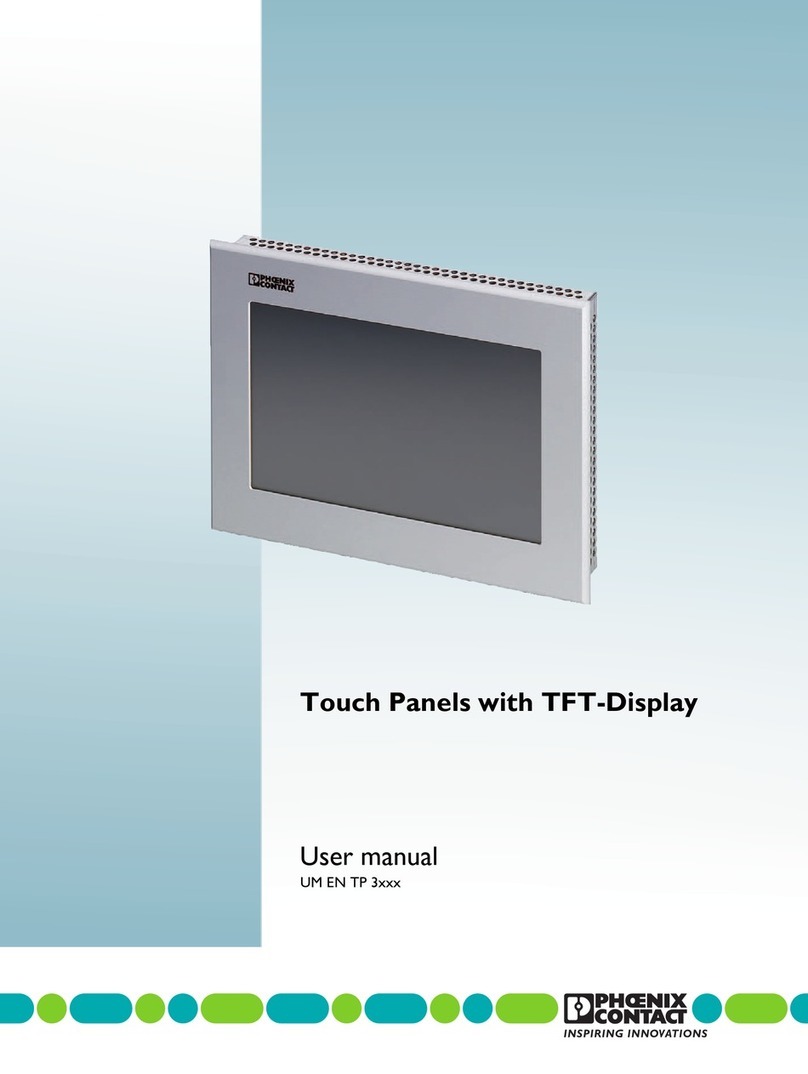
Phoenix Contact
Phoenix Contact UM EN TP 3 Series user manual
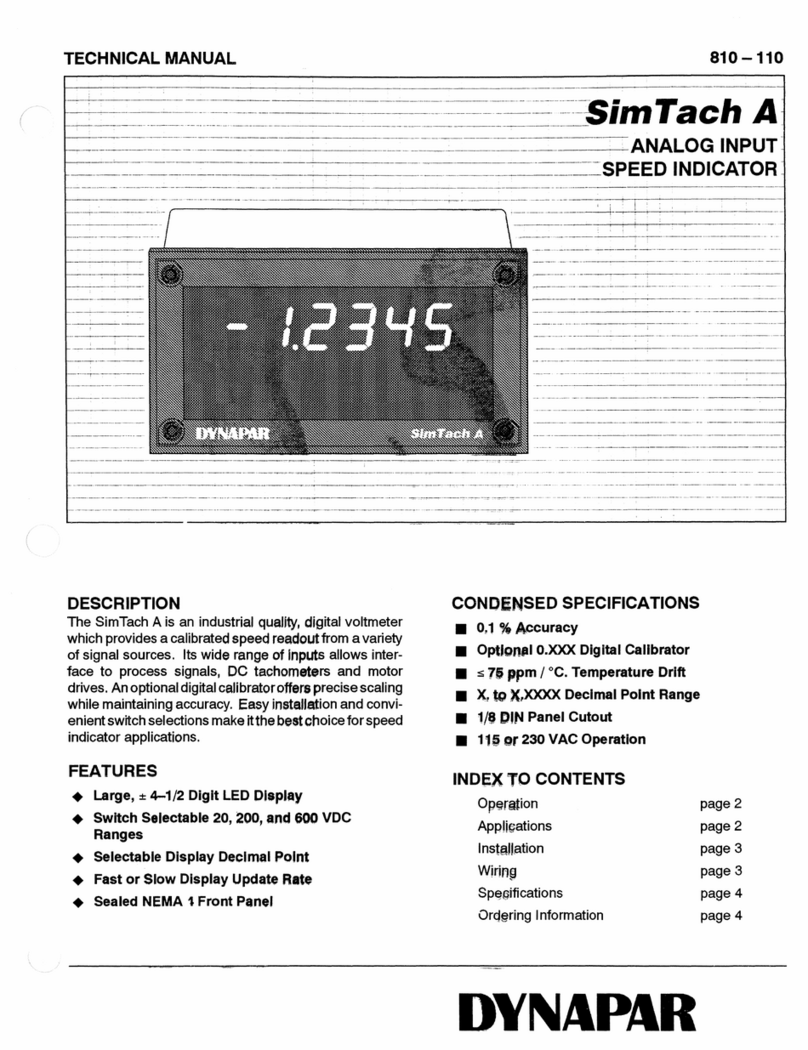
DYNAPAR
DYNAPAR SimTach A STA00 Technical manual

Winmate
Winmate W07IB3S-PCO1-POE user manual

Toshiba
Toshiba TR PMIU user manual
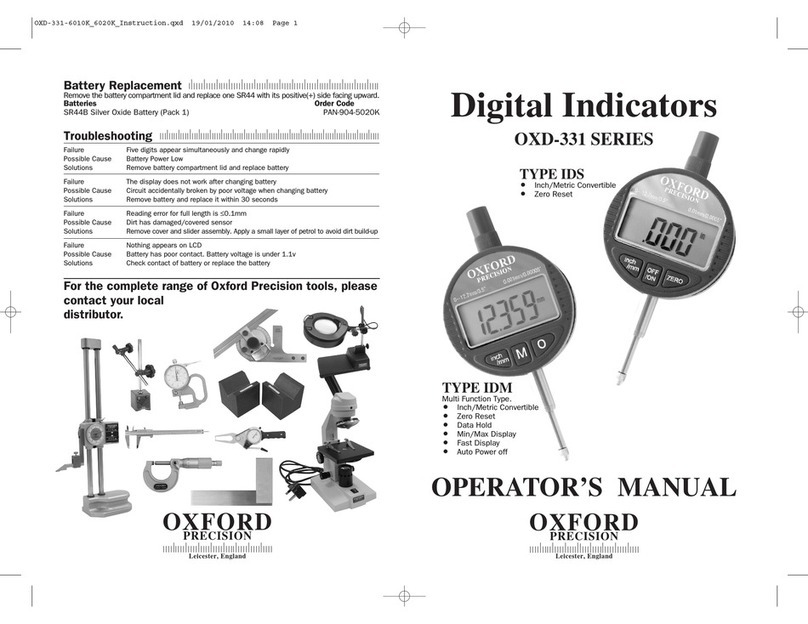
Oxford PRECISION
Oxford PRECISION OXD-331 IDM Operator's manual
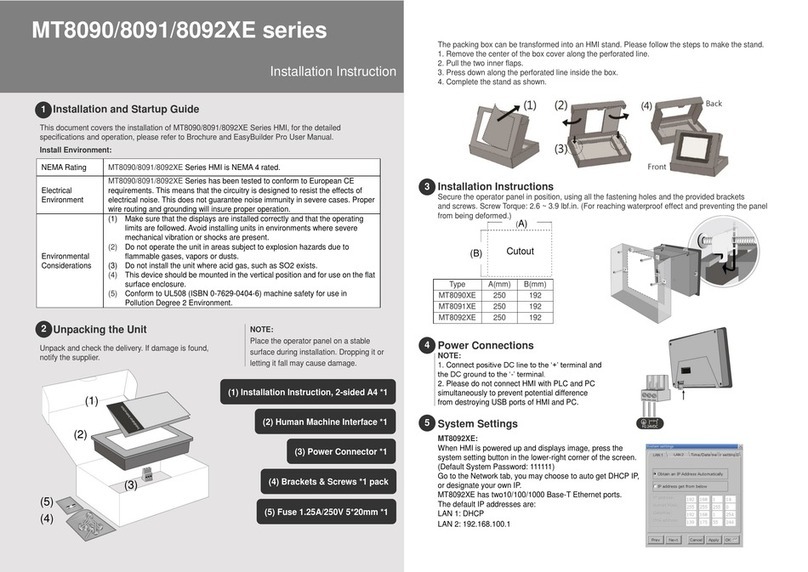
weintek
weintek MT8091XE Series Installation instruction
